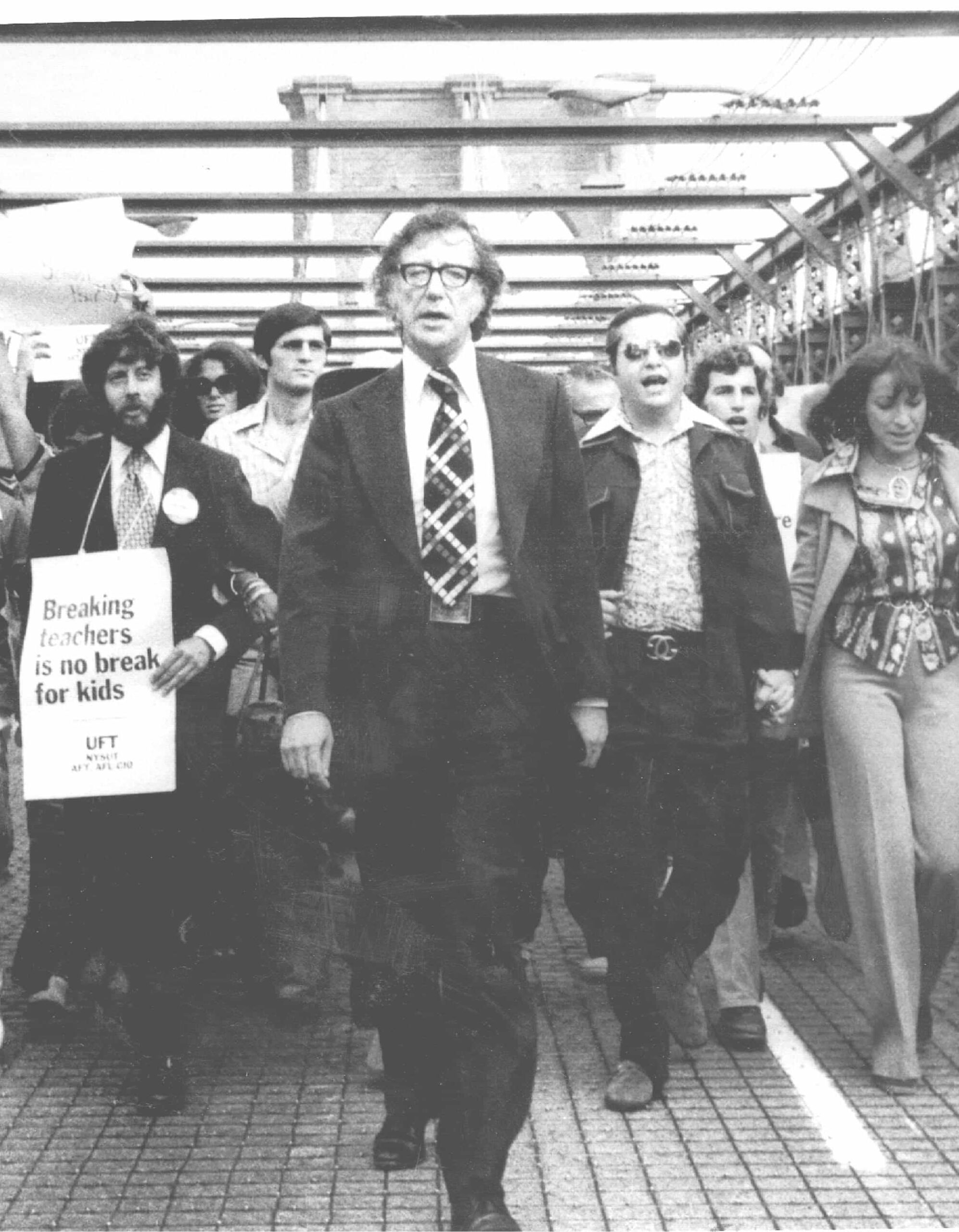
Table of Contents
- Before there was a union 3
- Birth of a union 5
- A seat at the table 9
- Strikes & sacrifice 13
- Standing up to bullies 15
- Politically speaking 19
- Powerhouse in action 25
- The sum of many parts 29
- Unity at last 33
- Defending rights in court 39
- Professional force 43
- Toward social justice 47
- Courage through catastrophe 53
- Member to member 59
- Union for life 65
- Future forward 67
Before there was a union
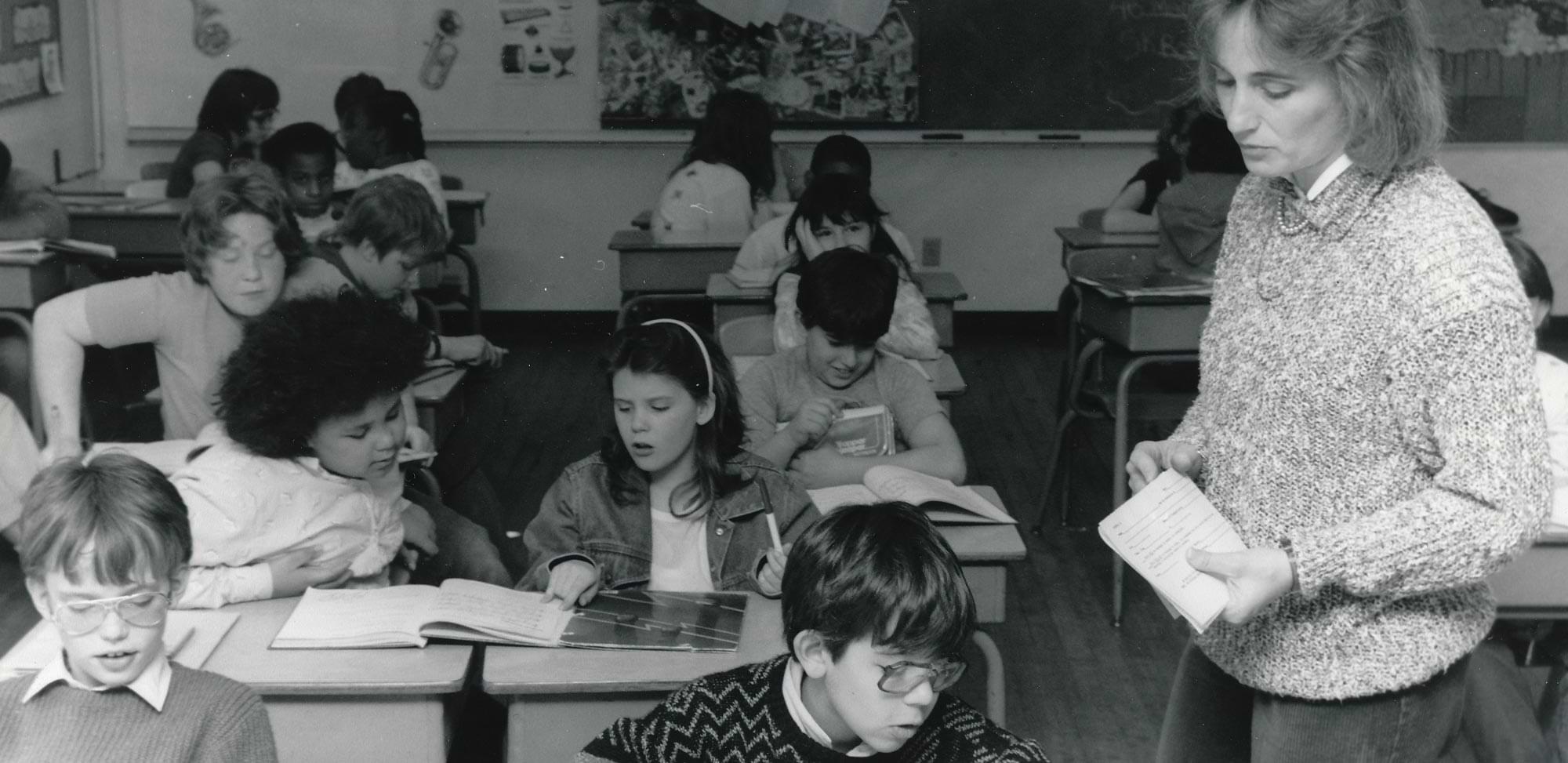
Rebelling against second-class status
NYSUT members today have the power of a statewide union at their back, providing a collective voice, strong contract protections and a secure retirement.
How bad was it back then, before there was a statewide union?
Retirees remember.
When Lou Cammarosano started teaching in 1956, members of the profession barely met second-class citizen status. You could be disciplined for reasons ranging from your politics to your pantsuit — to the sales job you’d taken at night because your daytime salary was so low. Or because the superintendent’s brother-in-law wanted your job, or for no reason at all.
Birth of a union
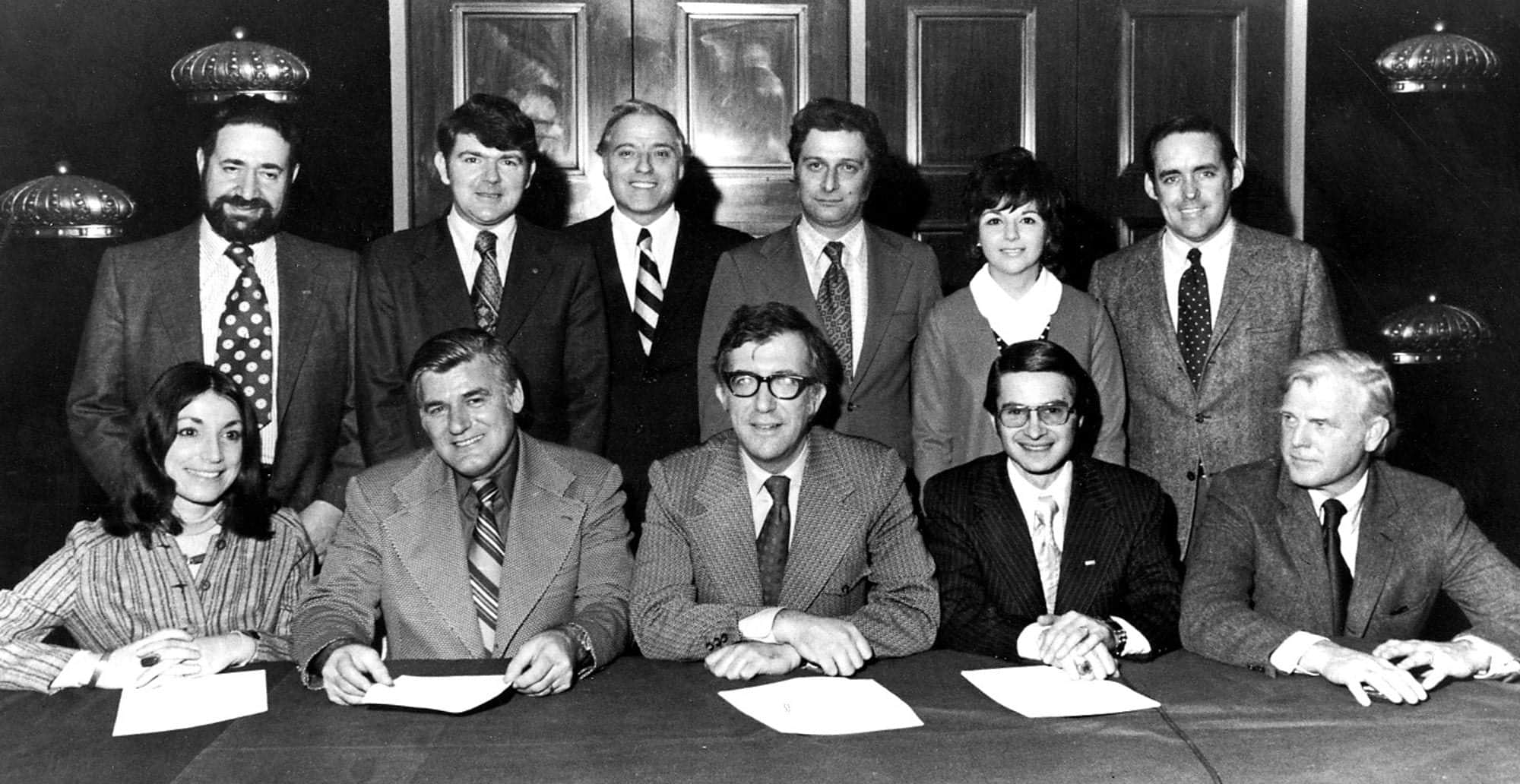
External threats show need for a statewide union
Upstate, New York State Teachers Association was dominant, with 105,000 members who were generally uneasy about the idea of professionals joining a union.
Downstate, United Teachers of New York held sway with about 72,000 members, professionals all, and firmly allied with the trade unions and the AFL-CIO.
Like feuding families, these two groups — still wrestling internally with questions of identity and purpose — battled for primacy. No blood was shed, but as the competition intensified, financial costs mounted, along with bitter feelings on both sides.
A seat at the table
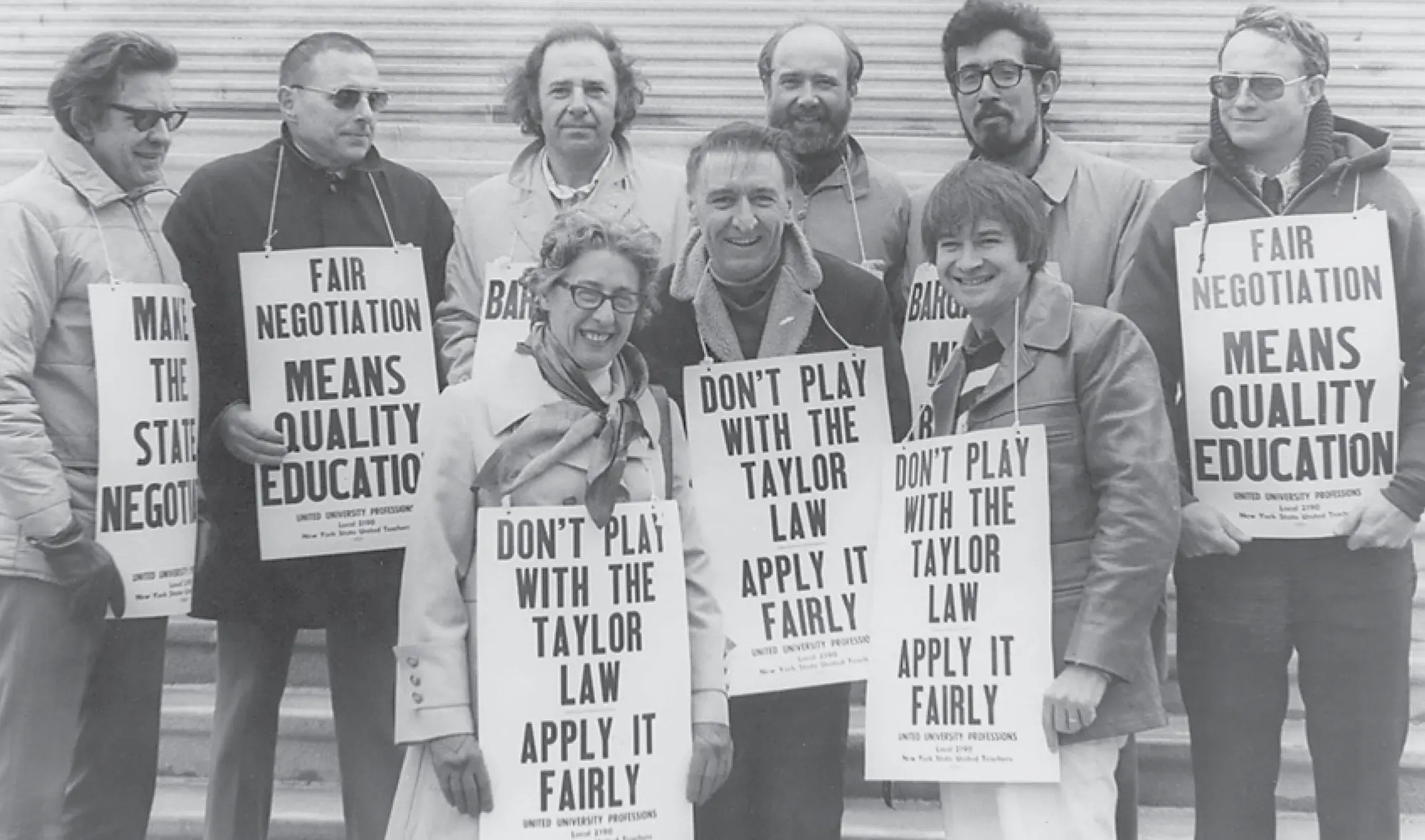
Collective bargaining reflects evolving priorities
Collective bargaining has come a long way in the decades since public employees gained this essential right in New York state.
Benefits also evolved. For example, United University Professions, representing faculty and professional staff at SUNY, negotiated some firsts for public employees, including flexible spending accounts and exchange of sick days. In the 2000s, family leave provisions were often on the table.
STRIKES & SACRIFICE
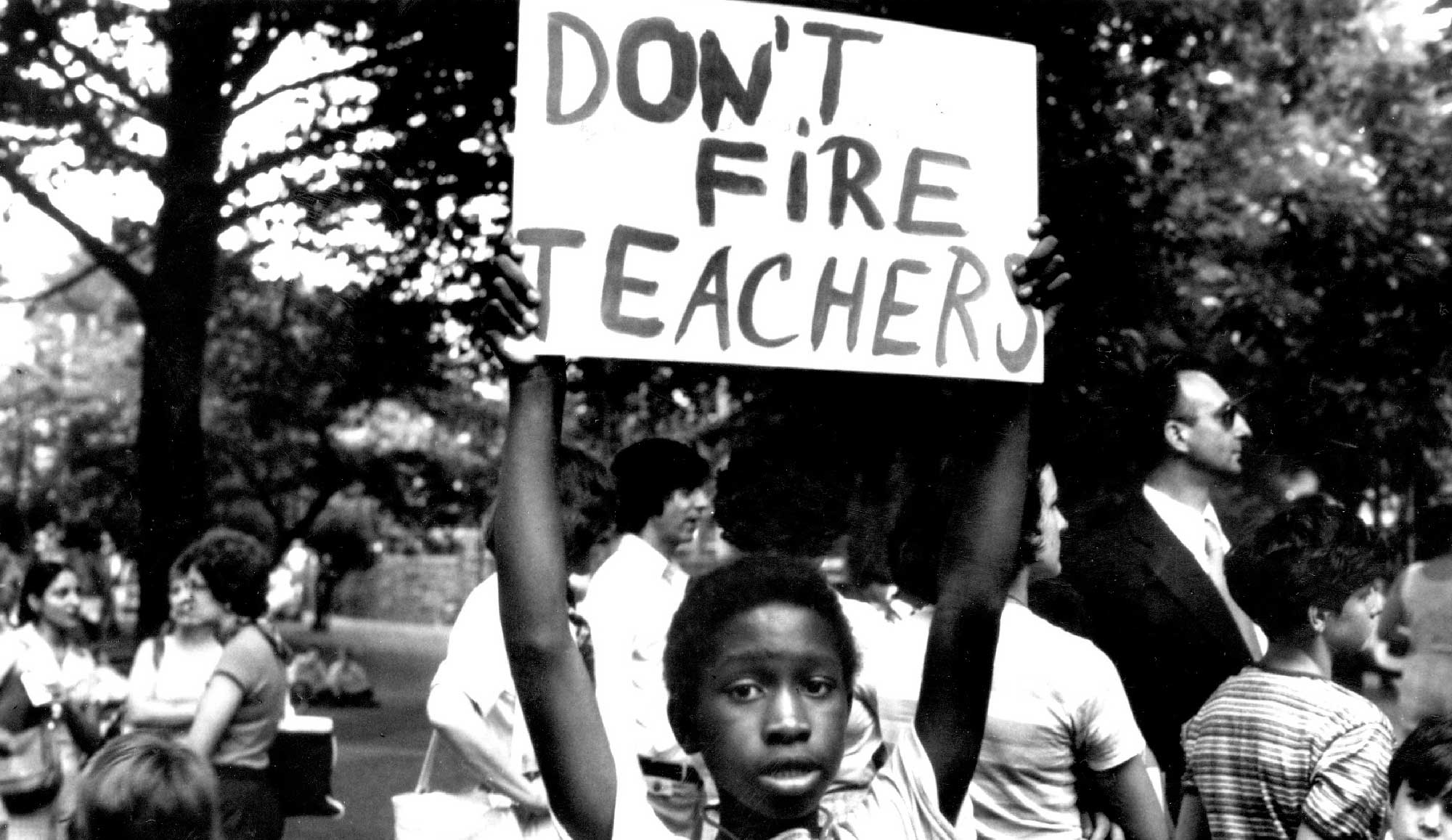
Personal sacrifice leads to professional gains
Penalties for strikes are severe. They can include the loss of two day’s pay for each day of the strike, loss of dues check-off, and jail time for strike leaders. In the ‘60s and ‘70s, 84 unionists went to jail for striking. The honor roll of those who sacrificed for the common good includes locals in Lakeland, Levittown, Nyack, Schenectady, Eastchester, New York City, Beacon, Orchard Park, Yorktown, North Syracuse, Lindenhurst and Massapequa. A dozen strikes concluded after one day, while 17 strikes lasted three weeks or more.
Standing up to bullies
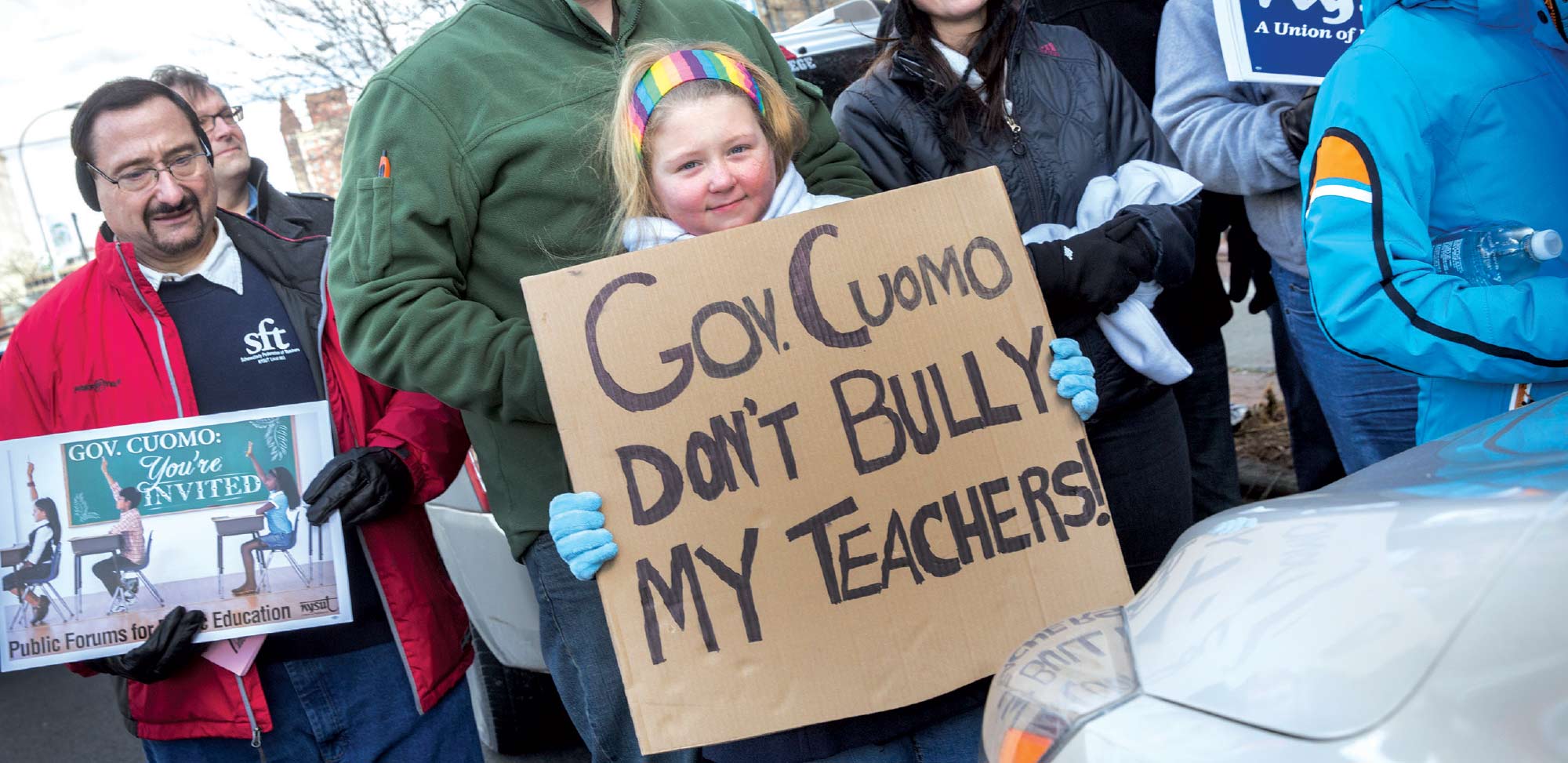
Confrontations tell the story of strength in numbers
Millionaire Betsy DeVos first provoked the union’s ire starting in 2016 for her bullying tactics as U.S. education secretary. She routinely disparaged public education, promoted private interests and dismantled essential protections for transgender students, students of color, and victims of sexual harassment. Battling national headwinds, NYSUT joined AFT and NEA in countering her distorted rationales and reinforcing state safeguards for students.
In 2018, anti-union extremists funded by DeVos worked aggressively to undo employment rights of our members. NYSUT put forward facts to counter a $10 million email campaign advising members how to leave their unions.
Politically Speaking

Union’s grassroots advocacy evolves, expands
The union’s nicknames, variously applied by politicians and the press, reflect a reputation built over decades of steady, savvy persistence in the public arena. Teachers went from being dissed and disregarded to defining the agenda in education and health care. “Who are the teachers supporting?” was a common inquiry from pro-education voters.
As NYSUT’s banner broadened to encompass a wide range of professions, the union became known as a model for grassroots effectiveness. NYSUT’s forward-thinking political strategy, honed over the last decade, focuses on empowering members, innovating tactics and building on our legacy.
Powerhouse in action
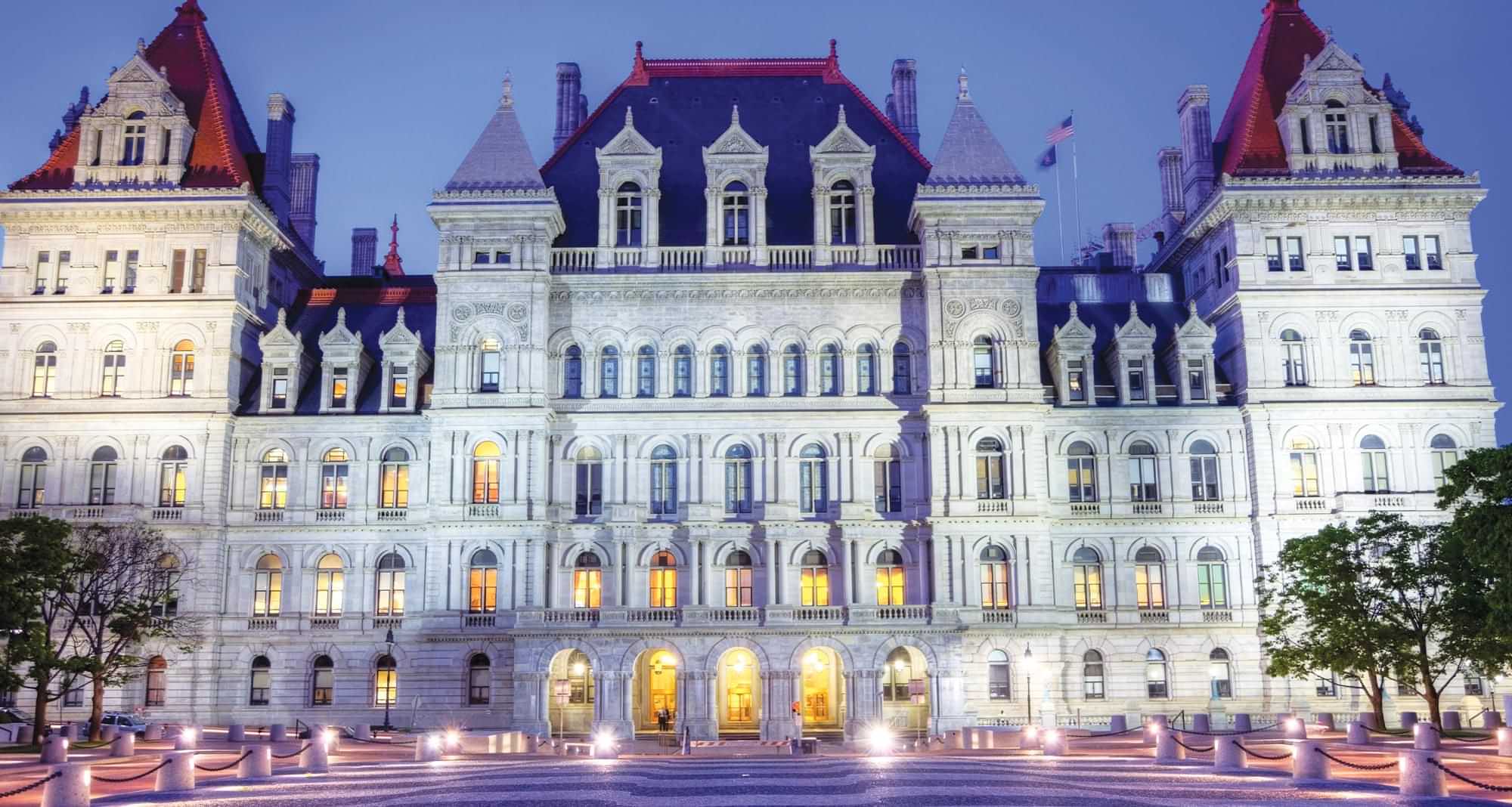
NYSUT’s persistence piles up legislative wins
When NYSUT fights, we win. Our grassroots political action gets results that change lives for the better. That was true in the union’s earliest days and it is just as true today. Victories celebrated in the union’s 50th year rest on a foundation laid by generations of union activists.
In 2022-23, the statewide union and its national affiliates, the American Federation of Teachers and the National Education Association, notched some legendary legislative wins:
- Student loan debt relief for members, after years of advocacy to fix the broken student loan system and make it easier to qualify for Public Service Loan Forgiveness.
- A 7.2 percent increase in school aid, more funding for pre-K and support for tackling the teacher shortage.
The Sum of Many Parts
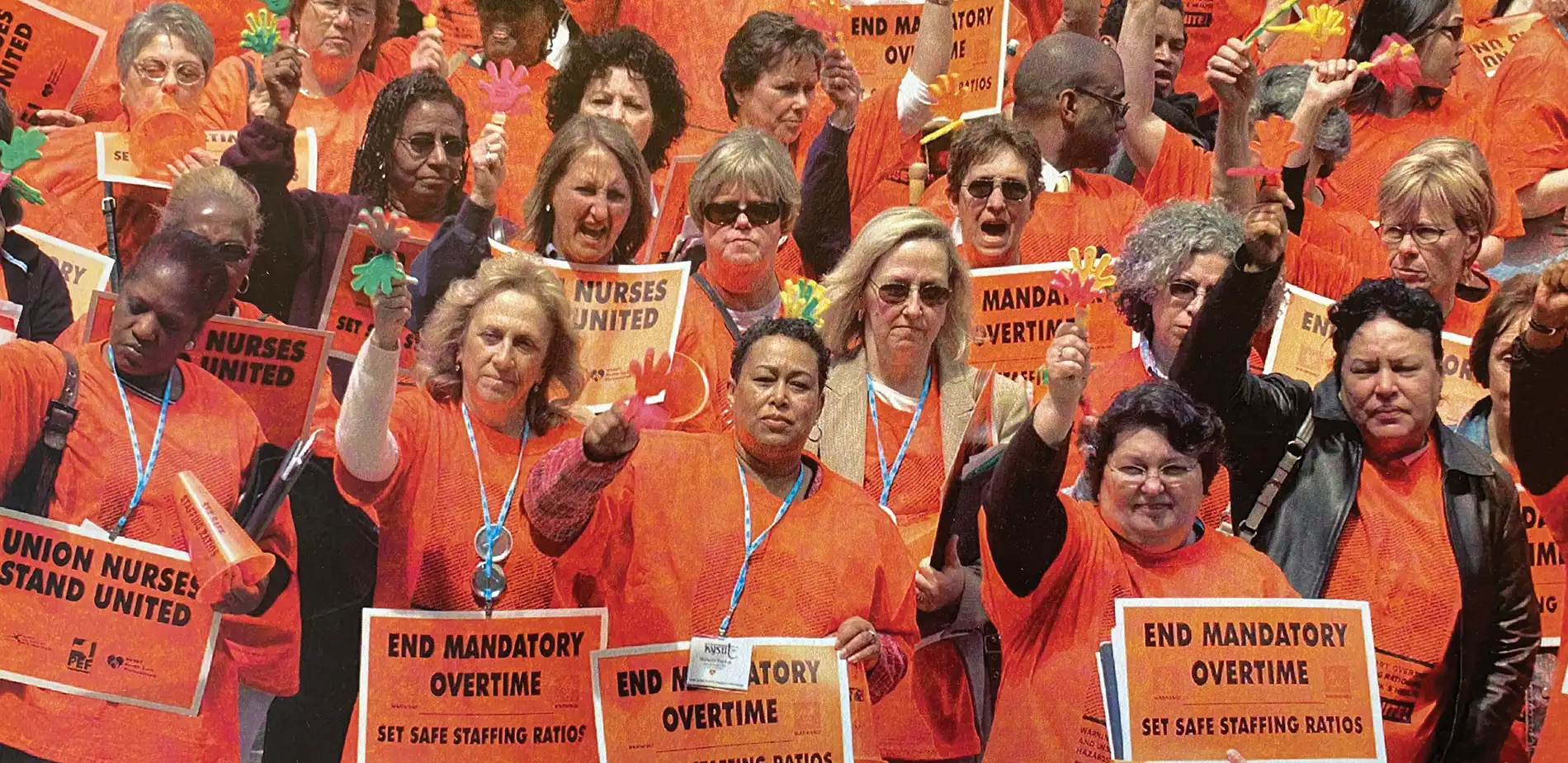
SRP, higher ed, health care members advance NYSUT’s strength
In the ’70s, as locals were being organized by school district, social workers, psychologists, librarians and nurses found a logical home in “the teachers’ union.” The same was true for School-Related Professionals, an umbrella term encompassing teacher aides, teaching assistants, bus drivers, custodians, food service workers, administrative staff and more.
Locals representing faculty and staff in public higher education affiliated during NYSUT’s formative years. After NYSUT won legislation in the 1980s enabling them to organize, substitute teachers also formed locals and gained improvements in pay and benefits.
Unity at last
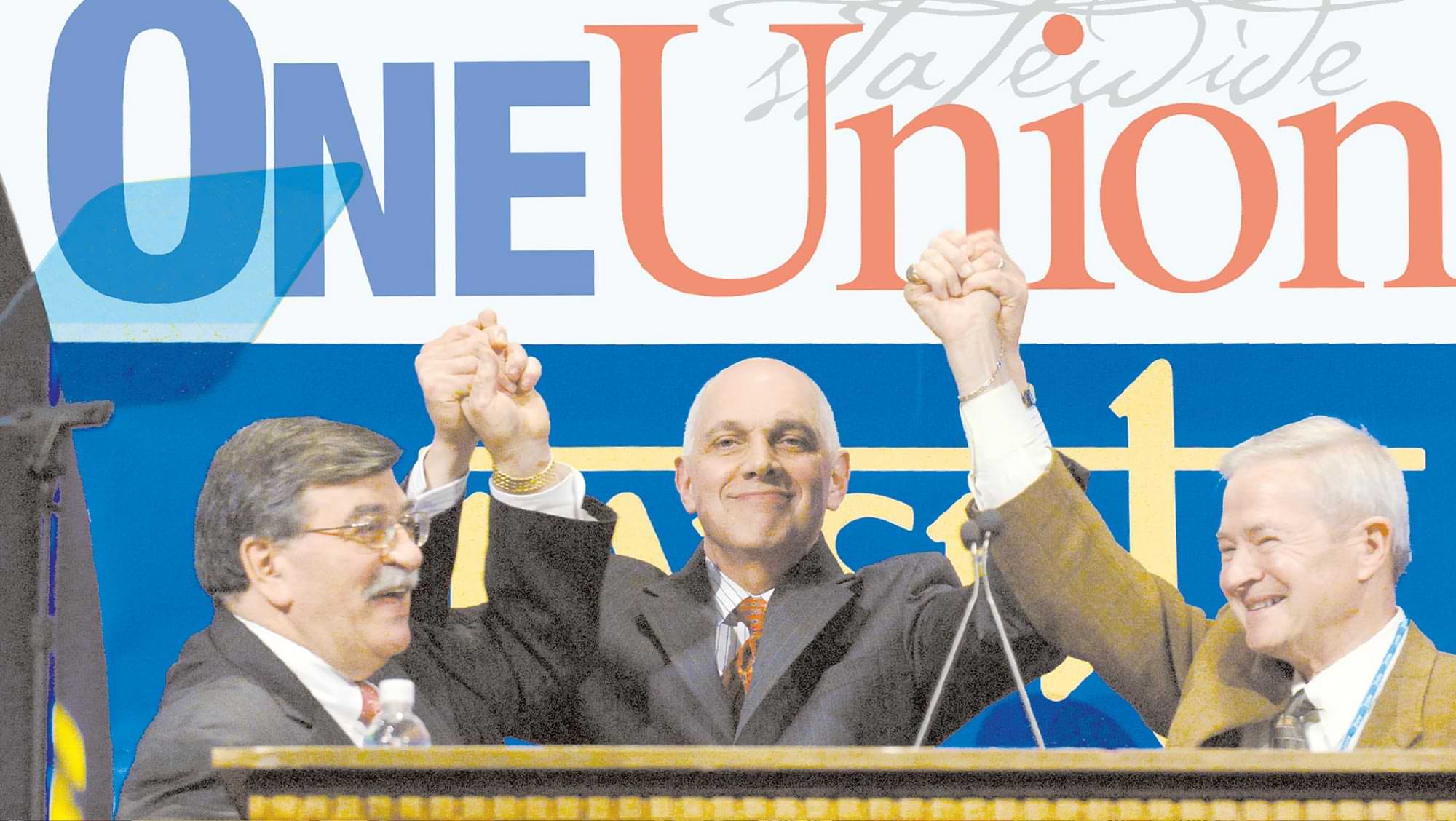
A major achievement, 30 years in the making
As floodwaters receded, NYSUT President Dick Iannuzzi traveled to hard-hit areas ready to offer help to members in need. He knew that a number of Southern Tier locals were affiliated with NEA/NY, NYSUT’s longtime rival. Unification between NEA/NY and NYSUT was in the works, but it wasn’t yet official. That didn’t matter.
NYSUT services, including support from the NYSUT Disaster Relief Fund, would be made immediately available to NEA/NY unionists who had suffered losses. “The devastation and hardship … is far greater than most can imagine,” Iannuzzi said. “These are our union sisters and brothers. We must do everything we can to come to their aid.”
One Voice United: More than 15,000 educators, parents, students and community members filled the Empire State Plaza for a NYSUT rally in 2013. Activists urged policymakers to support public education, stop the fixation on standardized testing and end the practice of tying student test scores to teacher evaluations.
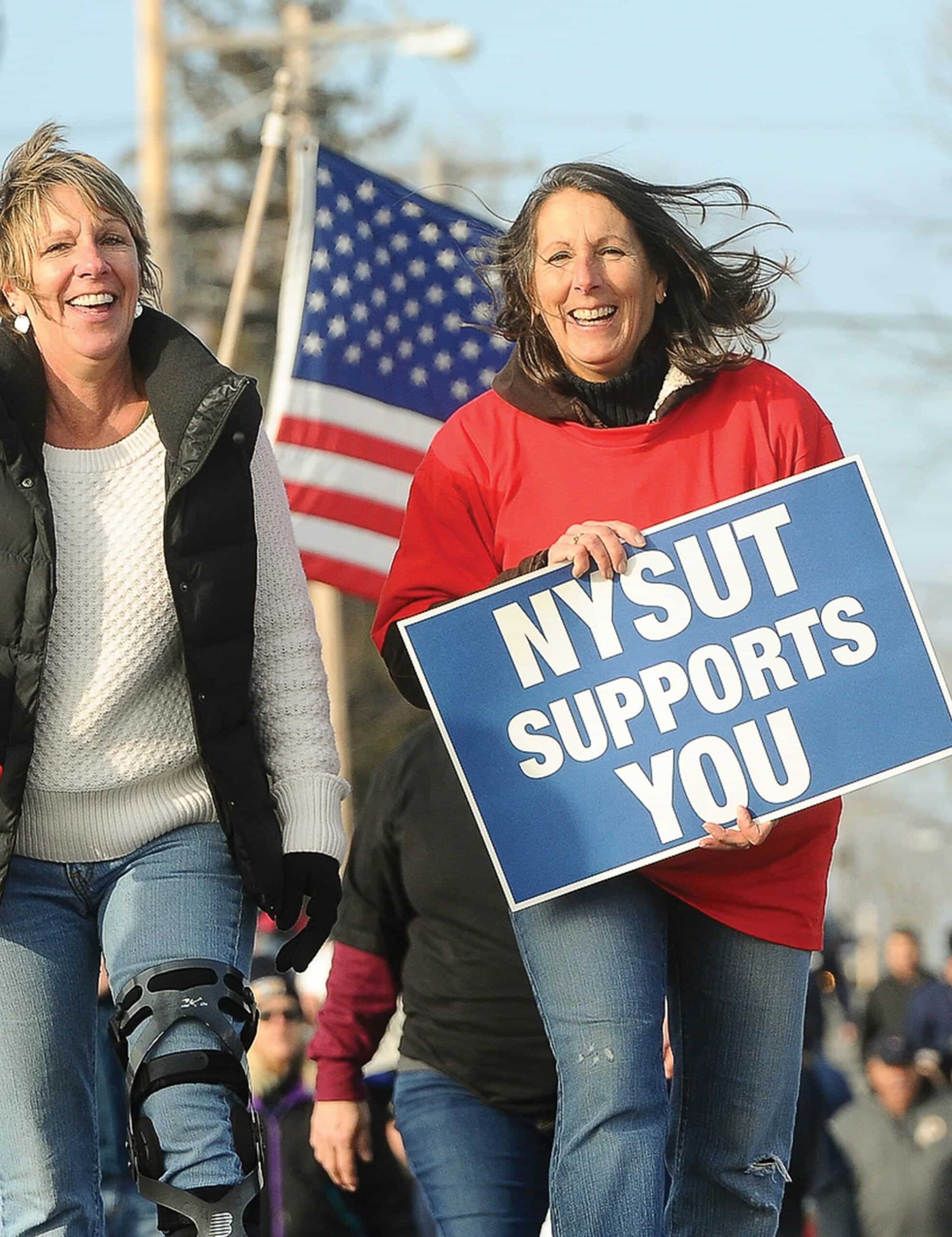
Defending rights in court
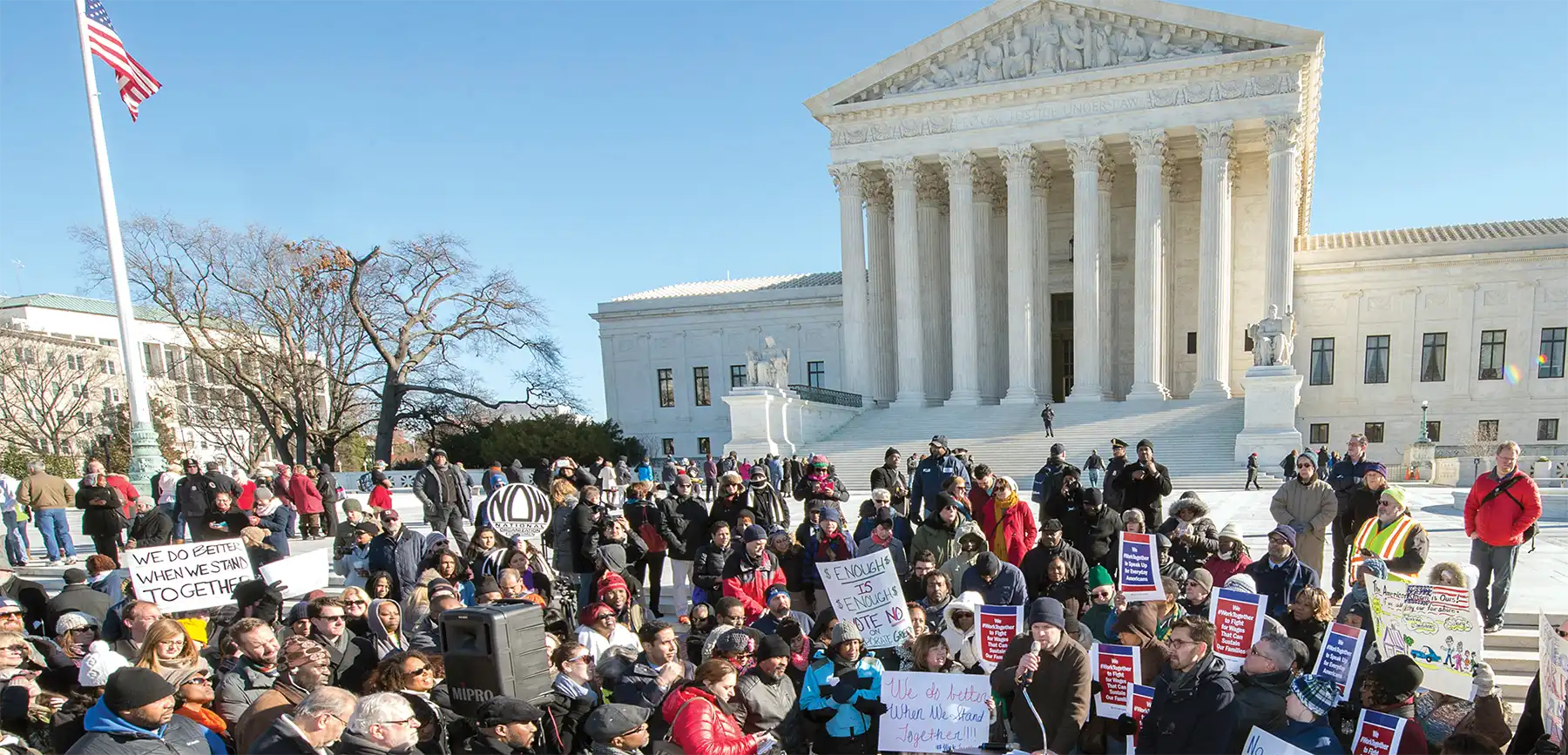
NYSUT protects members and helps shape the law
This was not an idle threat. NYSUT’s expert legal team has decades of success obtaining justice on our members’ behalf.
In this instance, funding was restored without a full-blown court battle. But there are countless instances in NYSUT’s 50-year history when it was necessary to go to court (often, many courts) to carry the day.
NYSUT defends members’ individual rights and advances the broad foundation of labor law that undergirds them. Over the years, students also have benefitted from union court victories restoring teachers, programs and services eliminated by heedless employers.
Professional force
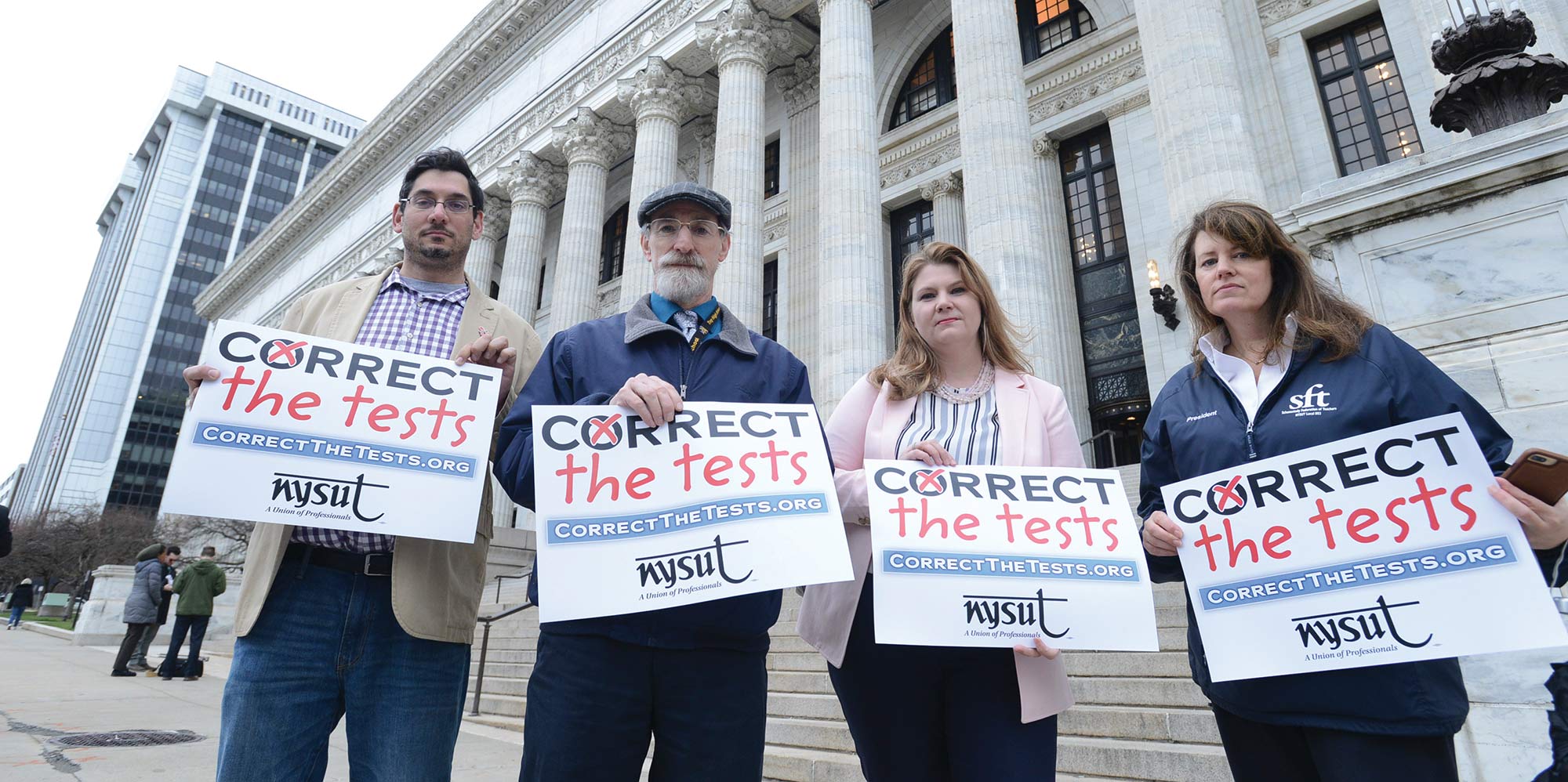
NYSUT is a leading voice on educational issues
In a tremendous win for the union and its next generation of members, the Board of Regents in 2022 voted to get rid of the state’s controversial edTPA requirement for teacher certification. This victory, years in the making, eliminated one of the most troublesome albatrosses from the test-and-punish era.
Toward social justice
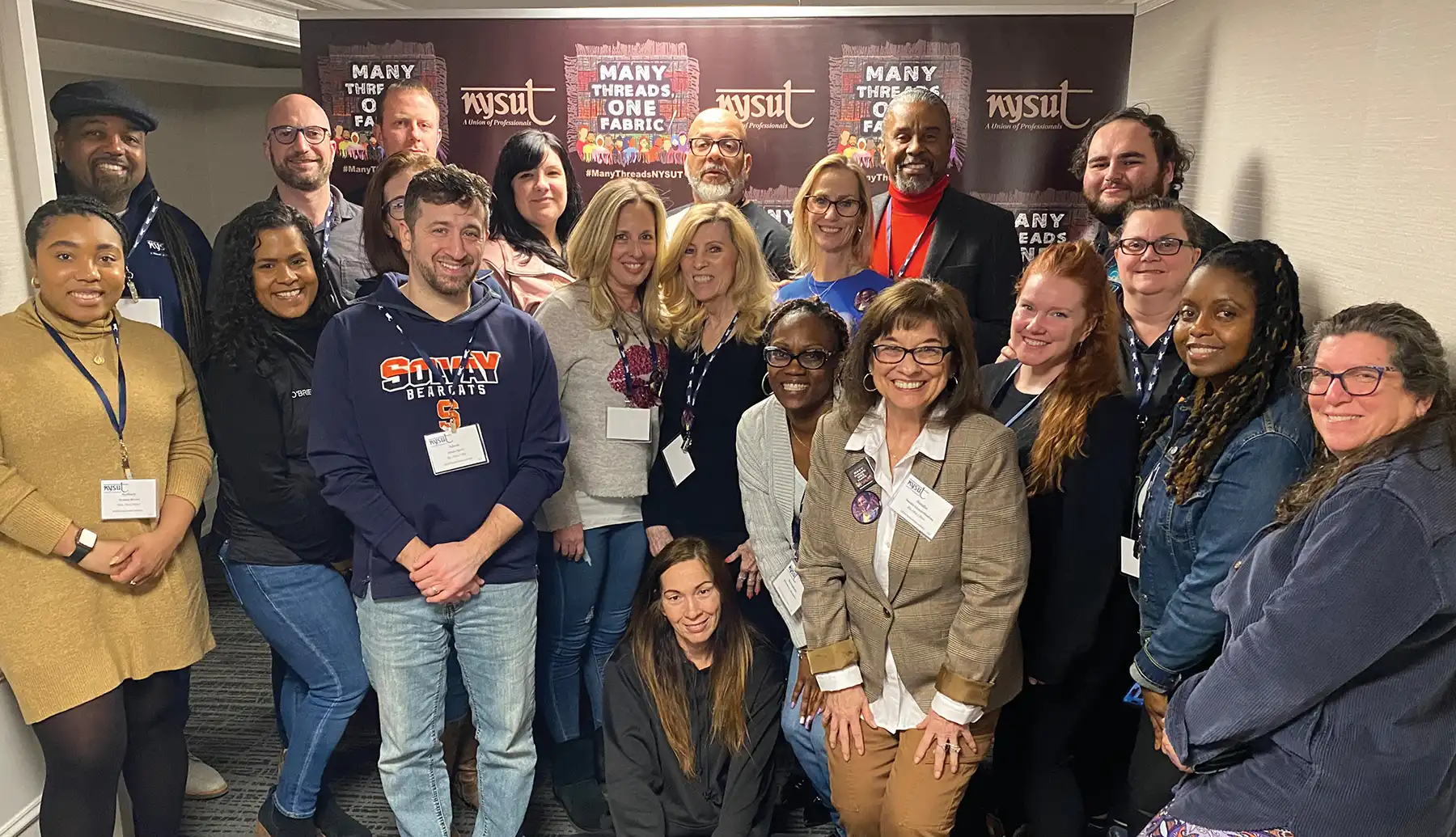
Union activism, philanthropy make the world a better place
Coined by Cicero, reiterated by Elizabeth Cady Stanton, these words sum up NYSUT’s wide-ranging social justice mission. From its founding, NYSUT has been dedicated to solidarity with the poor, the powerless and the disenfranchised. Over 50 years that mission has grown to tackle endemic injustice along with the changing demands of the day. Successive generations of activists have expanded NYSUT’s mission guided by this simple mantra: Union work is social justice work.
“Some would say unions should focus only on our bread-and-butter issues,” noted J. Philippe Abraham, NYSUT secretary-treasurer, “but there is a bigger world out there … We must also do the work that unions have always done — fight for those who are less powerful.”
Courage through catastrophe
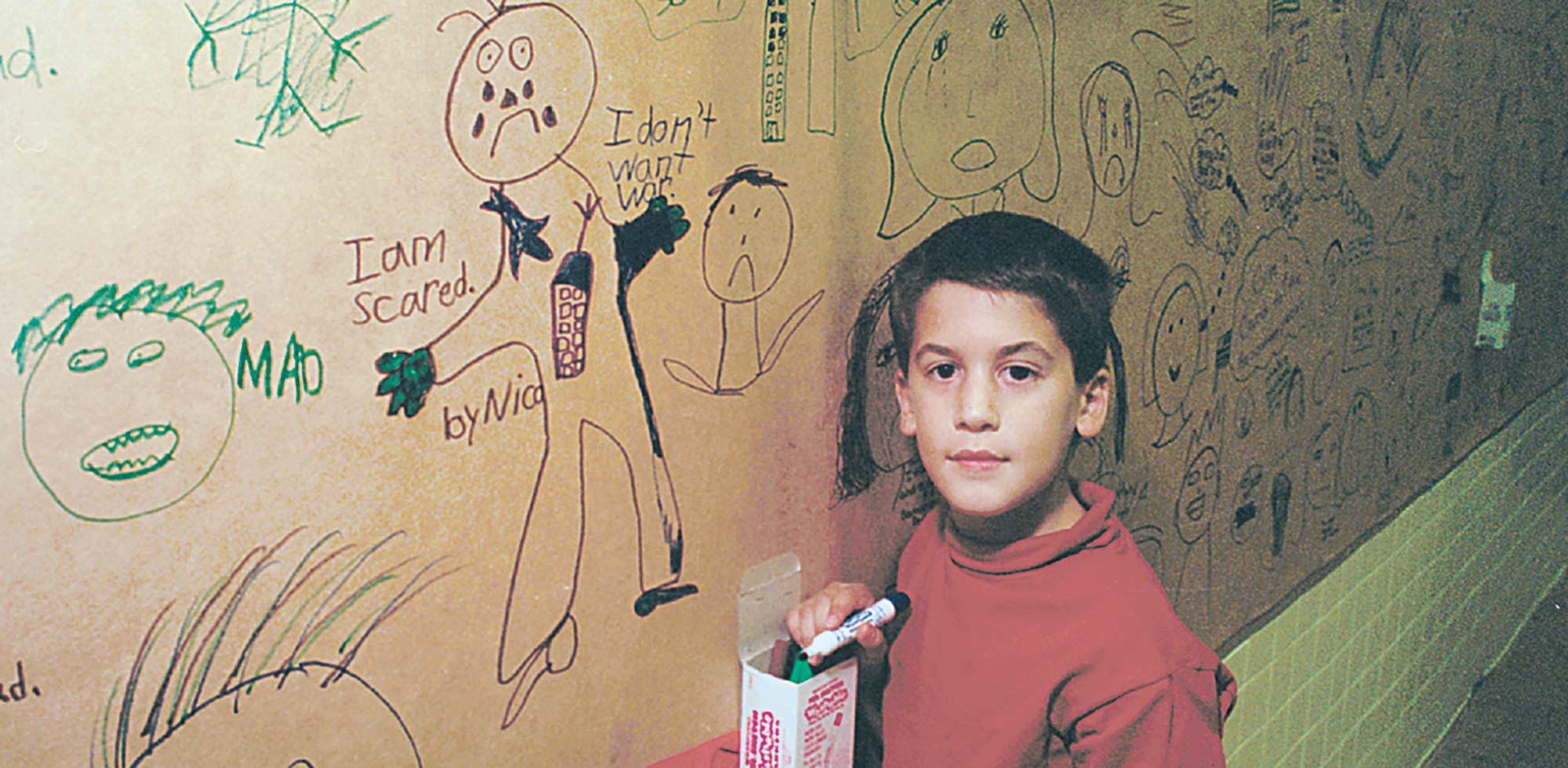
Honoring the unsung heroes of public service
So when dependable rhythms dissolve, we are in uncharted territory, challenged to navigate catastrophe without a road map.
That has happened twice in our 50-year history.
While we hope to never again experience the sudden disaster of Sept. 11, 2001, or the slow-motion devastation diagnosed on March 11, 2020, in many ways these crises define our union’s finest hours.
Member to member
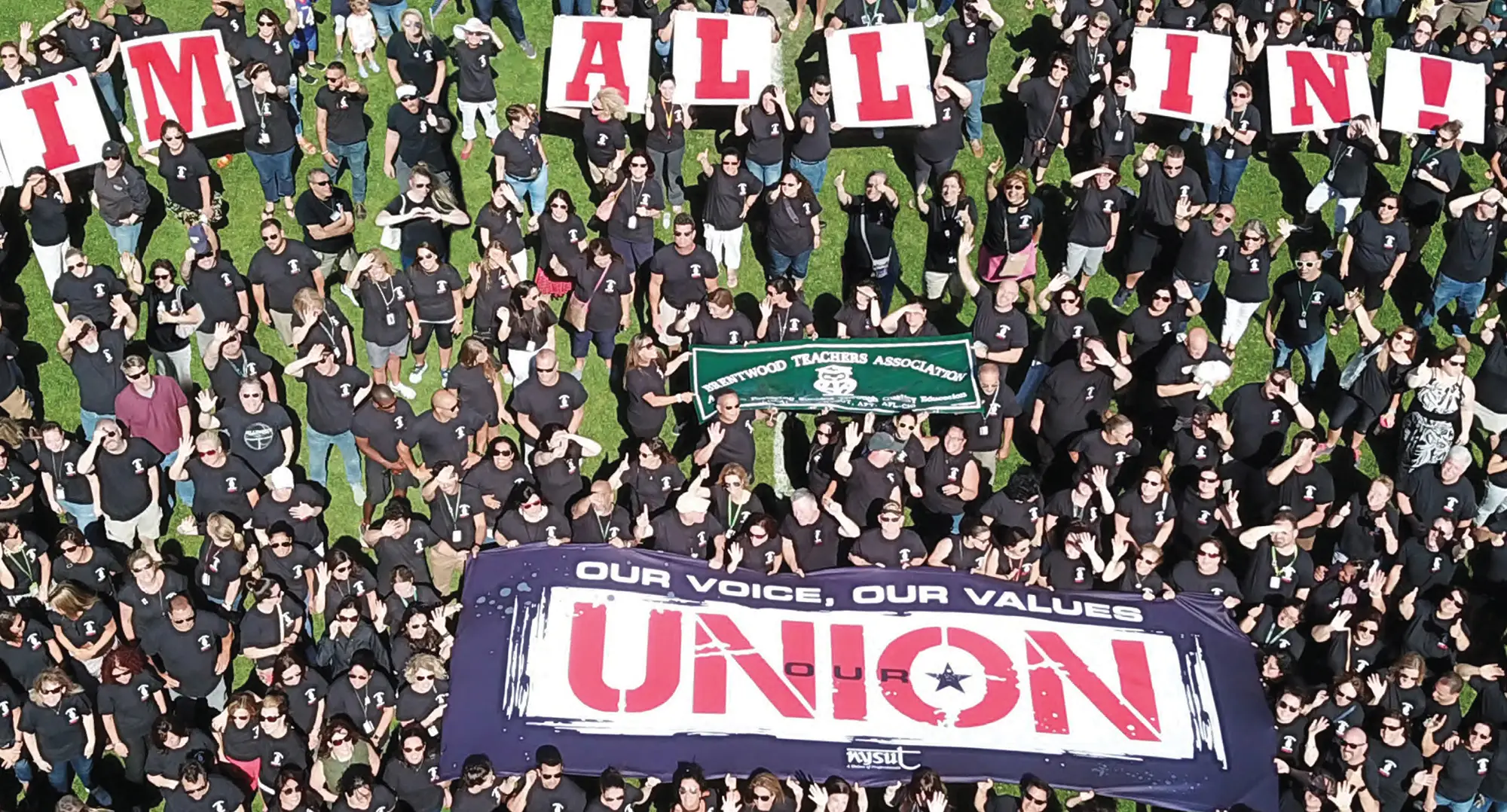
NYSUT goes back to its roots with member-to-member organizing
The downside, of course, was huge. A constitutional convention was a bad idea because it would jeopardize rights that had been enshrined for years — vital protections for free speech, public education, separation of church and state. Everything in the constitution would be up for grabs, including mandates against cutting pensions, protection of the workers’ compensation system and even workers’ right to organize. Anti-union forces and privateers would be sharpening their knives and spending big. Plus, taxpayers would foot the bill for convention costs. A constitutional convention could unleash a Pandora’s box of evils.
Union for life
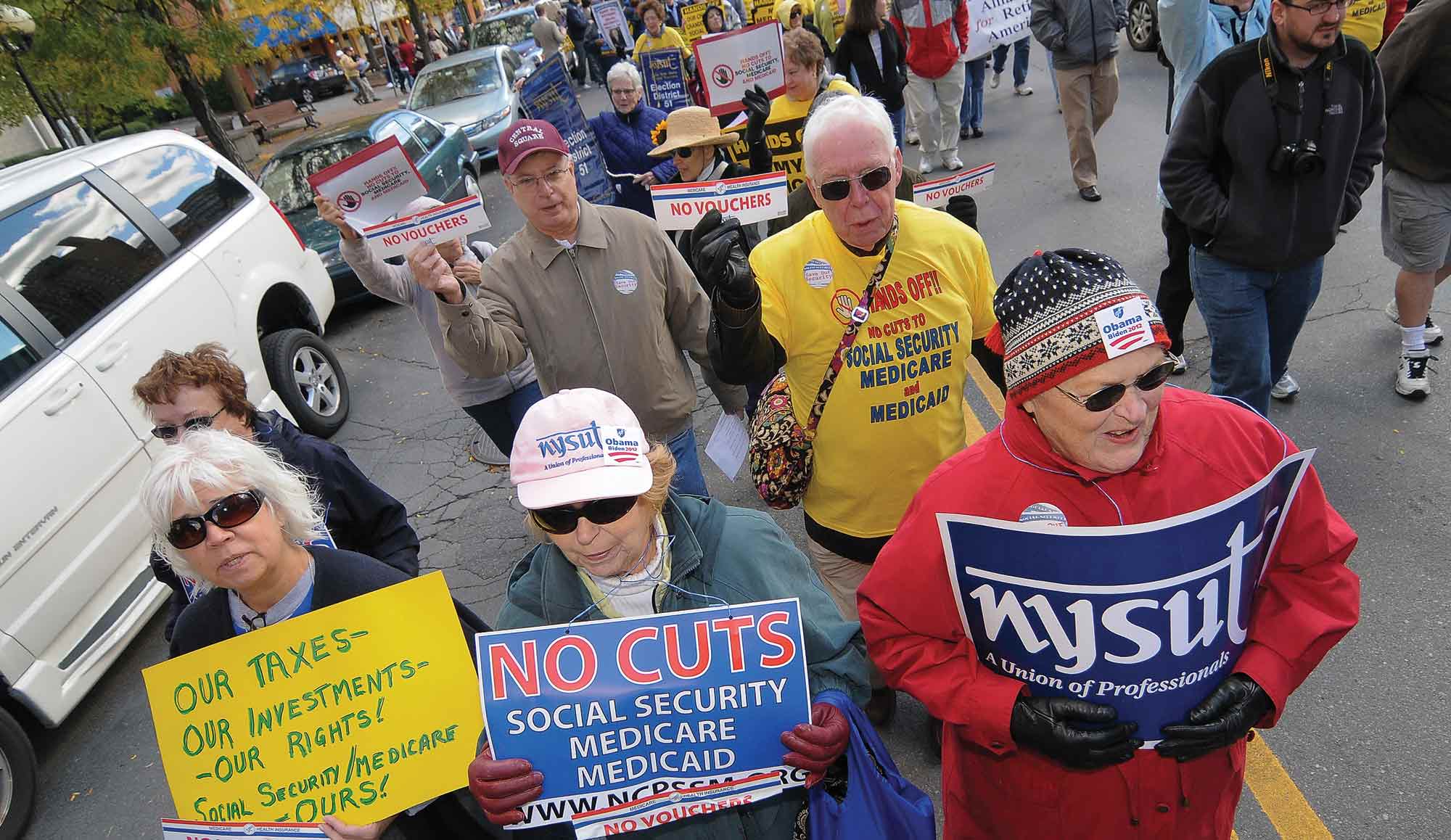
Retirees are an active ‘daytime army’
Union pioneer Jeanette DiLorenzo was once asked if she planned to pursue a hobby in retirement; she was not amused. “Hobby?” retorted the United Federation of Teachers retiree leader. “My hobby is organizing!”
“I have what in-service teachers don’t have — time, flexibility and the freedom to choose how I spend my time,” said retired Schroon Lake teacher Jeanette Stapley in 2015. “Being a union activist is my priority.”
Future forward
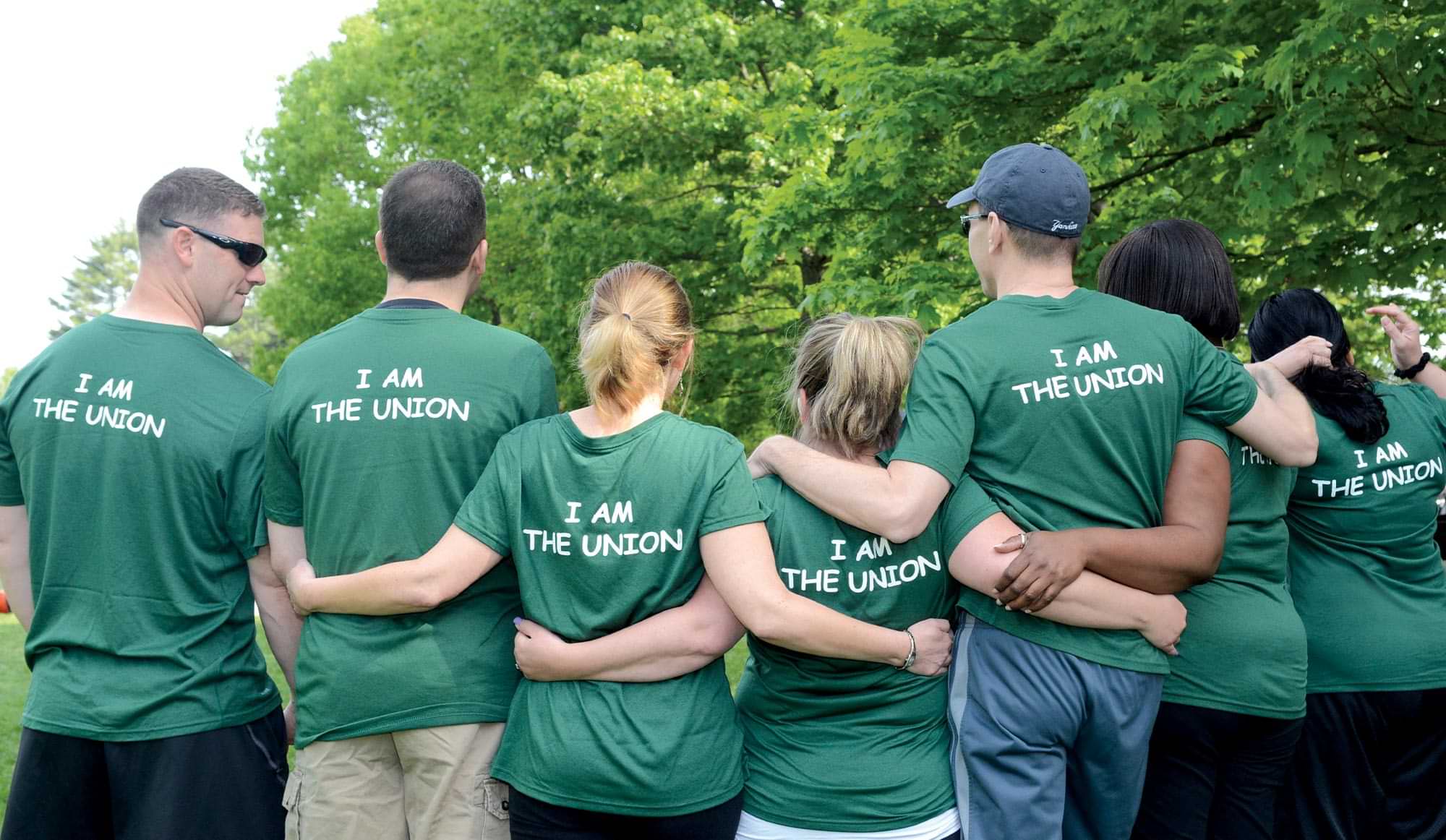
Looking ahead to NYSUT’s next 50 years
In early 2023, Andy Pallotta announced he was stepping down after six years as NYSUT president. NYSUT Executive Director Melinda Person is poised to become the next president at the 2023 Representative Assembly, running unopposed on her 25-year record of leadership in union and public education advocacy.
This change in NYSUT’s leadership comes at a high point in the union’s evolution. By 2023, it was clear that NYSUT’s non-stop organizing had effectively buttressed it against anti-union attacks ushered in by the Supreme Court’s Janus decision. Pressures imposed on members by the COVID-19 pandemic were largely receding. Relentless union advocacy was pushing many of the state’s test-and-punish policies toward extinction. And decades of effort by NYSUT and its allies had finally secured New York’s commitment to fully fund the state’s school aid formula, a long-sought redress of inequities.

Acknowledgements
This 50th Anniversary History of New York State United Teachers was made possible by the collaboration and support of many individuals, including NYSUT leaders past and present; and the communications staffs of NYSUT, United Federation of Teachers, American Federation of Teachers and the National Education Association.
Credits
Written by Deborah Hormell Ward
Design and Production by Nicole Clayton
Edited by Sylvia Saunders and Clarisse Butler Banks
Editorial support provided by NYSUT communications staff
Photo research by Amanda Boespflug and Andrew Watson
Review by NYSUT Communications Director James Morrison; Greg McCrea, assistant to the NYSUT executive vice president; and Lauren Ryba, counsel to the NYSUT president’s office.
Background for this project was provided by master’s thesis papers by Claudia Shacter-deChabert and Gail Westover; NYSUT’s 25th Anniversary publication; and 20 Years of Solidarity, edited by Bob Rice. Portions of this book first appeared in New York Teacher and NYSUT United, the official publication of NYSUT.
Photos were provided by NYSUT, UFT, and the Robert F. Wagner Archives at the Tamiment Library of New York University.
Opening photo shows United Federation of Teachers President Al Shanker leading 40,000 teachers and paraprofessionals across the Brooklyn Bridge in 1975, demonstrating solidarity in the fight for better classroom conditions. At right is Sandra Feldman, who succeeded Shanker as president of UFT and American Federation of Teachers.
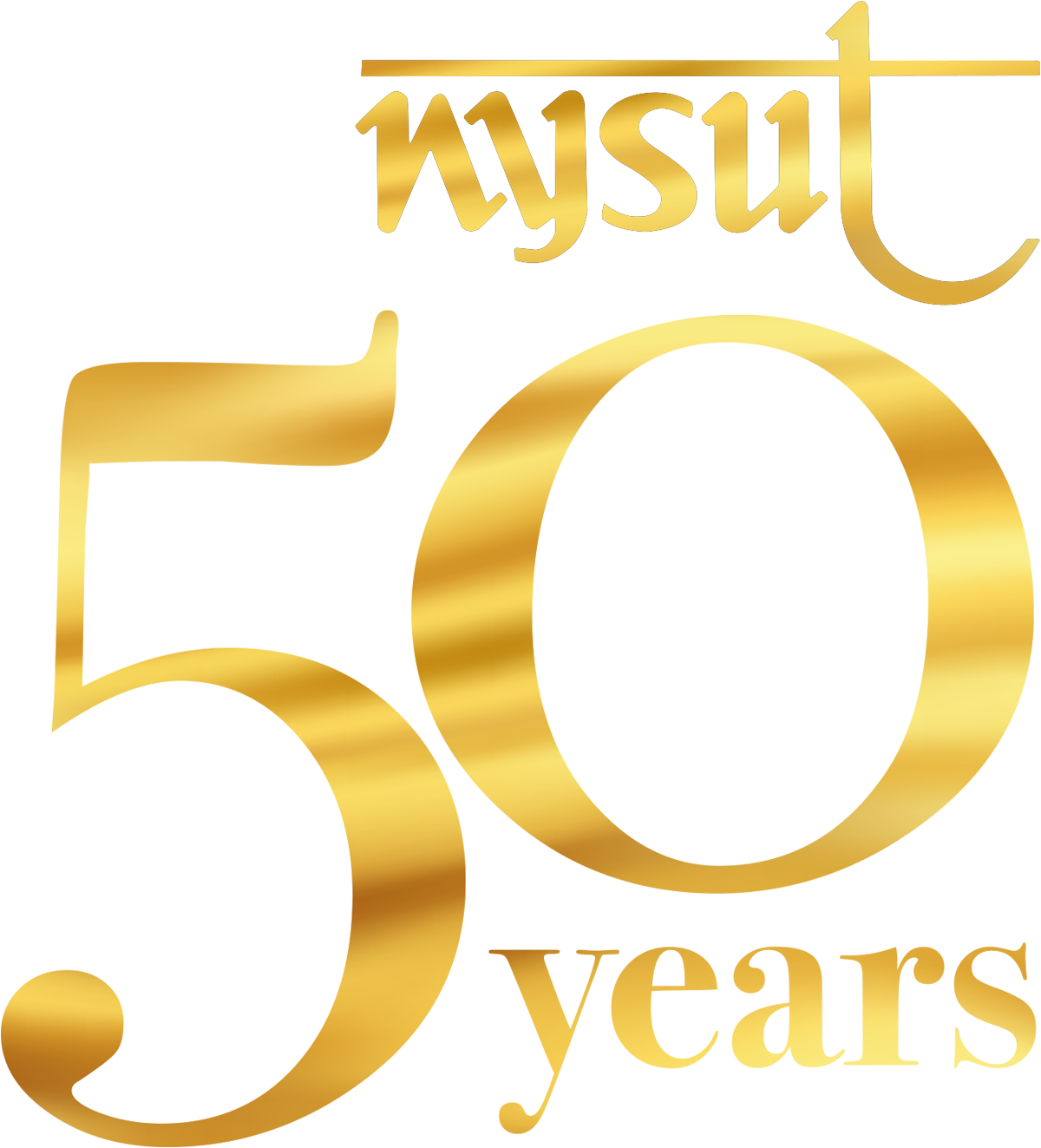
1973-2023
Thanks for reading our 50th Anniversary edition!